Firstly, I would like to wish everybody working in our industry a very merry Christmas and a happy new year.
I am confident that we will start to see the see the back of this terrible Covid-19 pandemic now we have started an immense vaccination programme - which by all accounts will hopefully get us back to some sort of normality. Let us hope it proves to be a game changer and we begin to see the country get back on its feet.
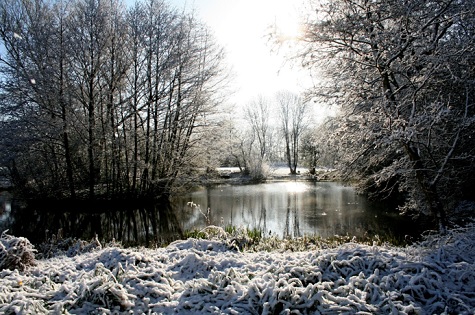
As mentioned in last week’s blog, it’s currently a remarkably busy time for many professional groundsmen, especially those working at professional football clubs. The Christmas and New Year is always an extremely busy period for these guys. With so many fixtures in such a short window and quite often the weather can be a major influence on their workload. Movable lightning rigs, pitch covers, under soil management systems all need managing during this busy period, both at the stadium and at training grounds.
Surface flooding
Having read Mark Hunts detailed Weather Blog last week it seems the mild wet weather will continue through the Christmas period, so it looks like we may not have a seasonal white Christmas this year.
With so much rain about, many natural soil-based pitches and playing surfaces may be prone to flooding and find themselves at field capacity (saturated) - that is to say, when all the pore (air) spaces in the soil profile remain filled with water.

Once a pitch becomes saturated, then we are in a situation of the pitch being in a poor state and will be prone to damage.
It is important to understand what soil type you have on your pitch, as the ability of the pitch to drain freely and how long it takes for floodwater or surface water to disperse from your pitch, will be dictated by the type of soil you have.
All grass swards are grown on soil/sand profiles that provide the appropriate environmental structure for plant growth. This growing medium, commonly known as soil, is made up of proportions of soil solids (mineral and organic material) and soil pores (water and air).
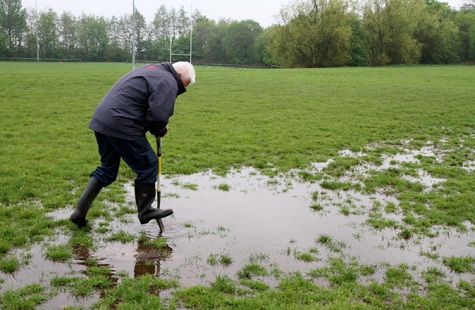
These pore spaces can vary in size and are generally classified into two sizes - macro pores (larger than 0.08mm) and micro pores (less than 0.08mm). Macro pores generally allow movement of air and the drainage of water and are large enough to accommodate plant roots and micro-organisms found in the soil. The ability to retain a good balance of macro pores in soil structure is essential for maintaining grass plant health. It is when these macro pores are either reduced in size by compaction or filled with water (saturated) that we see deterioration in pitch playability and resistance to wear.
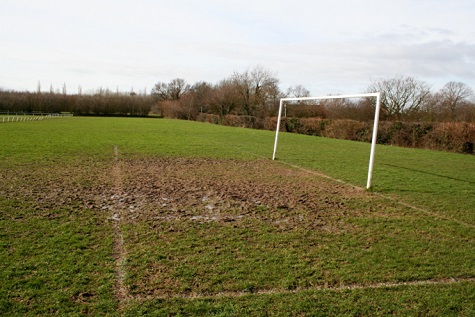
Having an effective pitch drainage scheme will help. Most modern pitches tend to have primary and secondary drainage systems installed. These systems aid the removal of surface water quickly and tend to keep the pitches playable in periods of wet weather.
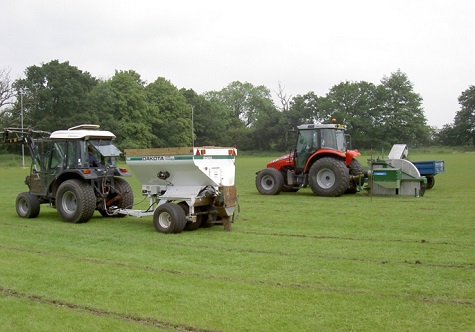
However, the effectiveness of any drainage system can be compromised over time when the drain runs become capped; it is important to retain a link between the drains and the playing surface. This will be achieved by regular aeration work and the application of topdressing.
Playing on saturated pitches will bring disastrous results. It is often better to postpone a fixture rather than ruin the playing surface for the rest of the season. Scrummage and line out play are the main causes of damage on rugby pitches during wet weather periods. The severity of the damage will be dependent upon the soil type and the ability of the top 100mm to drain quickly.
It is important that, once the game has finished, remedial work is carried out to repair divots and stand the grass back up. Care should be taken not to further damage the pitch by trying to get machinery on when it is wet and saturated.
Undertaking a regular aeration programme will go a long way to ensuring your pitch is able to cope during wet conditions. There is a wide range of professional aerators for use on winter turf pitches, available as walk-behind, ride-on, trailed or tractor mounted.
Depending on the condition of the soil you should be aerating on a monthly basis, trying to aerate to a depth between 100-200mm.
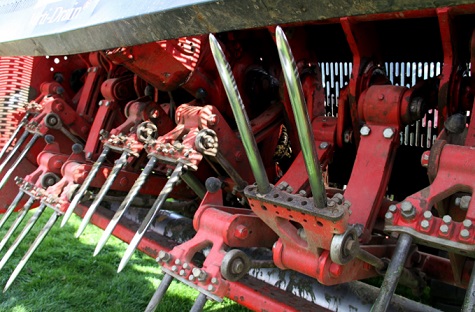
Once a year you should aim to aerate to a greater depth (200-300mm) using a larger, more powerful aerator. This will help dramatically, especially if you can topdress the pitch immediately afterwards with sand, enabling this material to go down into the aeration holes.
Unfortunately, I see far too many club pitches that become unplayable or prone to damage, mainly due to the lack of basic maintenance being carried out. Regular aeration, particularly on training pitches, will help enormously; there is nothing worse than having to play or train on a wet, soggy pitches.

In the main a well-maintained soil based pitch will perform adequality well throughout the year. Far too often the clubs that have problems are the ones who don’t invest nearly enough money, time or resources in looking after their pitches.
Having a better understanding of the maintenance required for soil based pitches will help. There is plenty of help and relevant resources available either on the internet or by contacting various organisations such as The Grounds Maintenance Association (GMA), Groundsman Training and the relevant sports governing bodies – who all provide a plethora of information pertaining to the care and maintenance of sports pitches.
Tree care
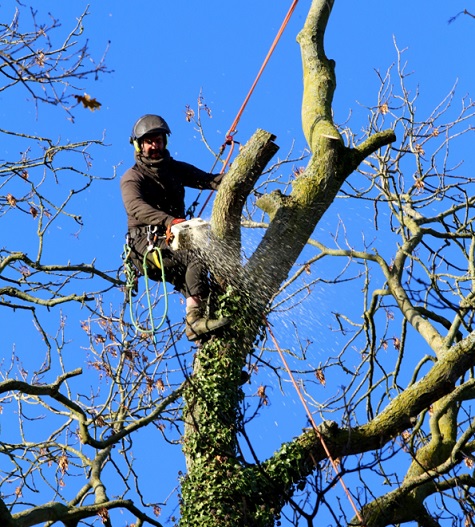
Finally, this week I also want to mention the work of the thousands of tree care professionals and specialist who look after the wellbeing of our trees, woodlands and plantations that make up the fabric of our natural heritage.
A few weeks I wrote about the true value of trees and their importance to our environment
Like most things in life they need care and attention to prolong their life span. We should not underestimate the value these trees bring to society. Over the last few years there has been concerns over the health of our trees due to the recent spate of viruses and diseases that have spread around the world. I have experience at first hand in this country the devastation of Dutch Elm disease that wiped out millions of Elm trees in the 1970s and 80s
Another disease, currently causing problems is ash dieback. Its introduction to Europe about 30 years ago has devastated the European ash (Fraxinus excelsior) because our native ash species did not evolve with the fungus and this means it has no natural defence against it.

Last week I caught up with a local tree maintenance contractor who was having to fell a very large 150ft high ash tree that had unfortunately succumbed to the dreaded ash dieback. It was located very close to some local neighbours houses and was being taken down in sections. Having heard the chainsaw in operation and seeing this arborist working high in the tree, I could not resist the opportunity to go and have a closer look and take some photographs.
I soon caught up with the ground crew who were on hand to remove the timber and support the tree surgeon. The work was being done by Holts Tree Care &Tree Surgery, a local contractor from Shifnal. The high climbing tree surgeon was John Banner, specialist tree climber from Albrighton. It was fascinating watching him working, a very accomplished professional who has been climbing for over 18 years.
It is not until you are able to see such operations close at hand, you are able to appreciate the skills and experience required to fell large trees, especially when there are houses and buildings close by.
So my hat goes off to these dedicated people and it just goes to show what a diverse industry we work in.